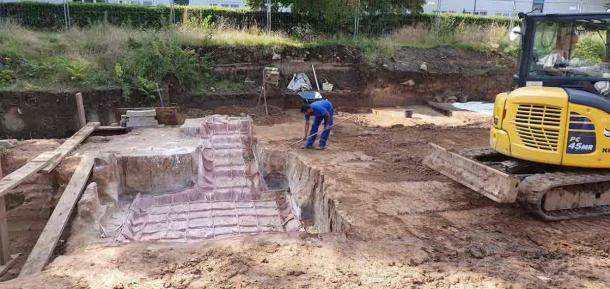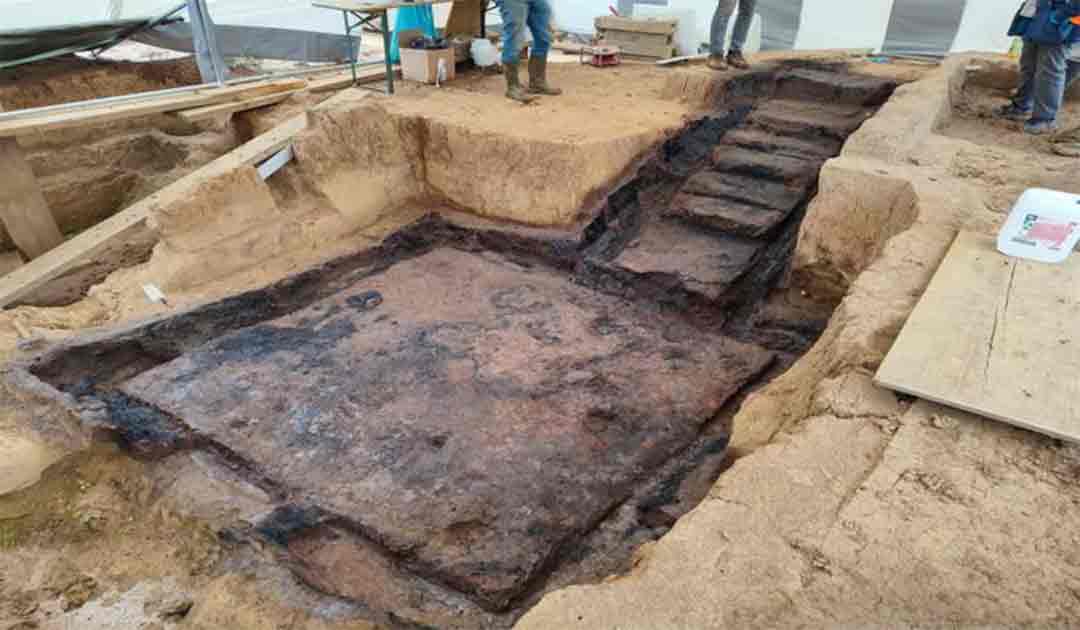A Roman Wooden Cellar Unearthed in Frankfurt's Nida
In the heart of modern Frankfurt, Germany, a new window into the past has been uncovered. The recent archaeological discovery of a full, well-preserved Roman wooden cellar in the ancient Roman city of Nida offers a unique glimpse into Roman life nearly two millennia ago. This exceptional find, unearthed by the Frankfurt Archaeological Museum's team, has sparked excitement among historians and archaeologists alike.
A Unique Part of Roman Nida
The cellar, part of a residential building likely dating back to the late 1st century AD, was discovered during an excavation conducted by the city of Frankfurt Monument Office in March 2023. Situated in what is now Frankfurt’s districts of Heddernheim and Praunheim, Nida was once a significant Roman settlement and the capital of Civitas Taunensium around 110 AD.
The find is particularly important due to its state of preservation. Unlike many ancient remains, which often offer only fragmented clues to the past, this wooden cellar has survived in an astonishingly intact condition. Its discovery offers a rare opportunity to understand the architectural styles, domestic life, and urban layout of Roman Nida.

The Roman cellar at the discovery site. (Thomas Flügen / Archäologisches Museum Frankfurt)
Echoes of Roman Life
The excavation revealed more than just structural remains. Within the confines of the cellar, archaeologists found signs of a sudden, destructive event – a fire that ravaged the residential structure. Charred beams, remnants of charcoal, and scattered debris paint a vivid picture of a calamity that once swept through the household. Notably, the cellar contained everyday items such as ceramic and glass vessels and metal objects, hinting at the daily lives of its inhabitants.
The artifacts recovered from the site are currently undergoing analysis at the Frankfurt Archaeological Museum. These items are expected to shed further light on the dating of the cellar, the lifestyle of its occupants, and the sequence of events leading to its abandonment and eventual burial.
- Rats, Exploding Toilet Seats and Demons of the Deep: The Hazards of Roman Sewers
- 6 Ways Roman Engineers Were Way Ahead of Their Time

The cellar floor and stairs leading down to it were removed from the site in order to preserve them. (Holger Menzel / Archäologisches Museum Frankfurt)
Swift Action Saved the Roman Cellar
The urgency and dedication shown in the cellar's preservation underscore the significance of this discovery. "Such an extraordinary find requires special consideration... we decided to save the cellar and thereby an important artifact of ancient Frankfurt," Ina Hartwig, head of the Department of Culture, explained. The successful recovery of the cellar was a race against time, made possible through technical expertise and newly tested conservation methods.
Wolfgang David, director of the Archaeological Museum, praised the swift action: "From the perspective of the Archaeological Museum, it’s fantastic that, thanks to the swift decision of the Department of Culture and Science, the necessary funds for the costly recovery of the highly sensitive remains of the cellar could be obtained in the short term."
This proactive approach not only saved the cellar from further deterioration but also laid the groundwork for its future presentation to the public.
And if, like me, you are wondering how the heck they did it, here are the 15 steps as listed by Frankfurt City Council:
SALVAGING THE ROMAN CELLAR IN 15 STEPS:
- Strengthening the 25 square meter surfaces with suitable synthetic resins
- Application of a separating layer made of silicone rubber
- Application of a capsule layer of gypsum laminates
- Milling of separating cuts to make the 33 floor segments manageable
- Attachment of stiffening bars to reinforce the plaster capsules
- Removing the segments from the ground
- Transport of the areas to Winterbach
- Underside cleaning of unconsolidated layers of earth
- Consolidation of the layers from the underside
- Bonding of the surfaces on the underside with fiberglass laminates
- Removal of the protective capsules
- Editing the edges
- Production of 33 bases from aluminum profiles
- Height adjustment of the segments
- Coloring of smaller defects and joints
An Archaeological Milestone Met
This discovery is not an isolated incident in the history of Roman Nida. Over the last century, similar cellars with fire damage have been unearthed, albeit in less favorable conditions. What sets the 2023 find apart is not only its preservation but also the attention to detail and modern techniques employed in its excavation and analysis.
As the cellar's story unfolds, it contributes to a broader understanding of Roman urban life and architectural practices. The collaborative effort to save and study the cellar reflects a commitment to uncovering and preserving our shared human heritage.
Top image: Detail of the Roman cellar found in Frankfurt. Source: Thomas Flügen / Archäologisches Museum Frankfurt
By Gary Manners
References
Carvajal, Guillermo. "Roman Wooden Cellar Found in the Ancient City of Nida in Frankfurt." La Brujula Verde. Available at: https://www.labrujulaverde.com/en/2024/02/roman-wooden-cellar-found-in-the-ancient-city-of-nida-in-frankfurt/
Radley, Dario. "Excavations Uncover a Preserved Wooden Cellar in the Roman City of Nida in Frankfurt." ArchaeologyMag. https://archaeologymag.com/2024/02/preserved-wooden-cellar-found-in-nida-frankfurt/
"Recent Months' Discovery: An Exceptionally Well Preserved Wooden Cellar from the Roman Nida." Archäologisches Museum Frankfurt Facebook Page. https://www.facebook.com/ArchaeologischesMuseumFFM/posts/846629497474350

















